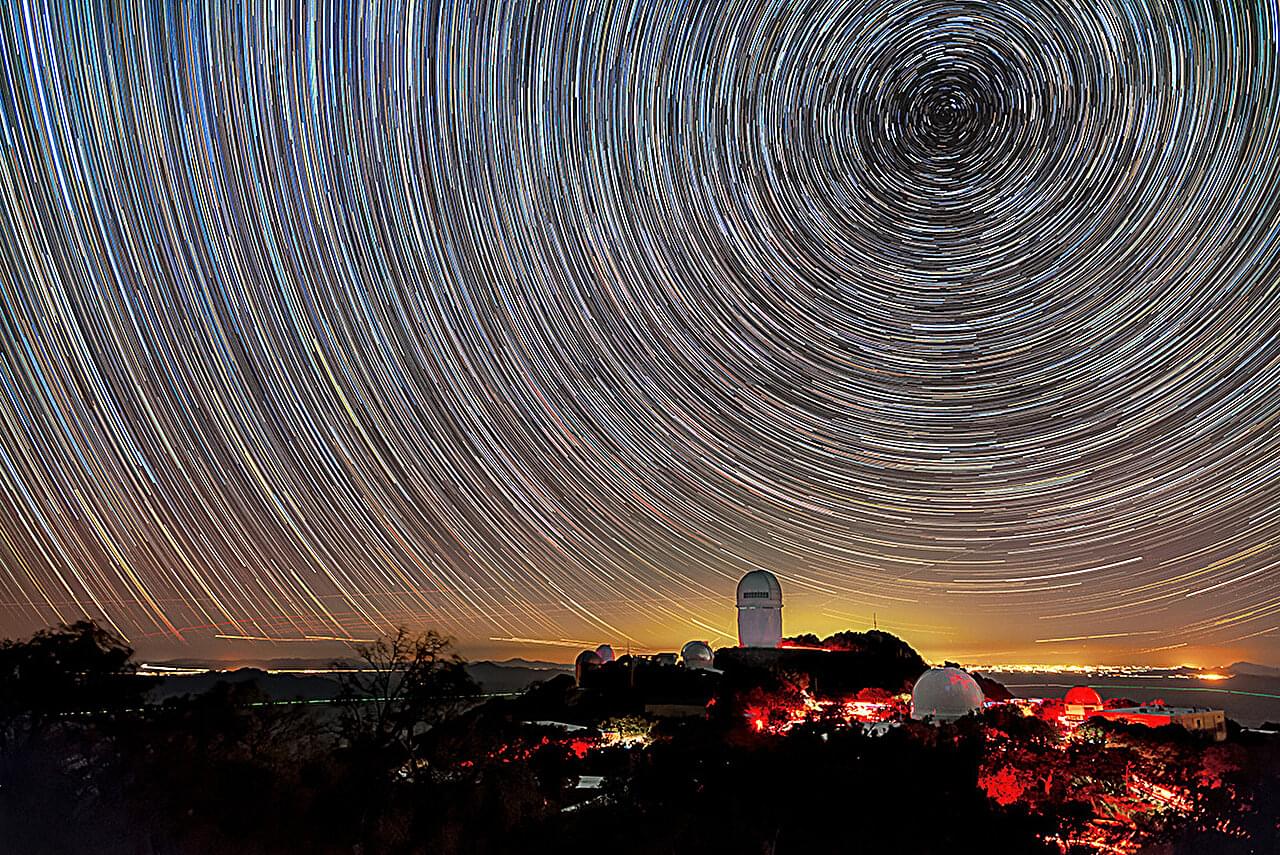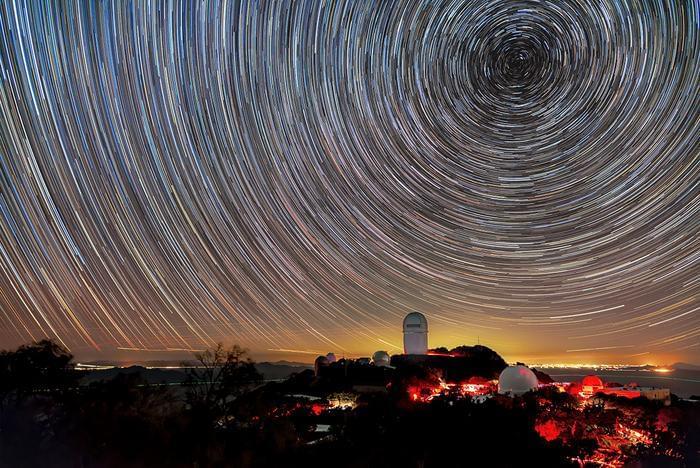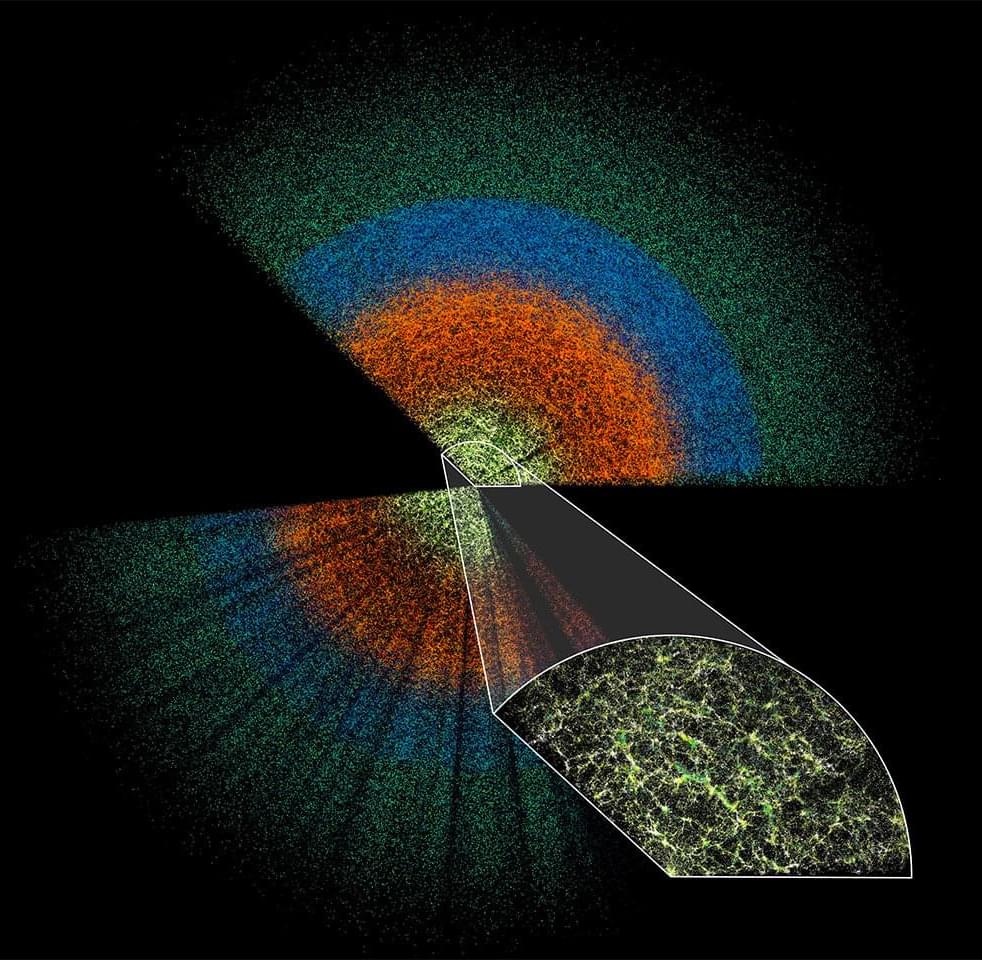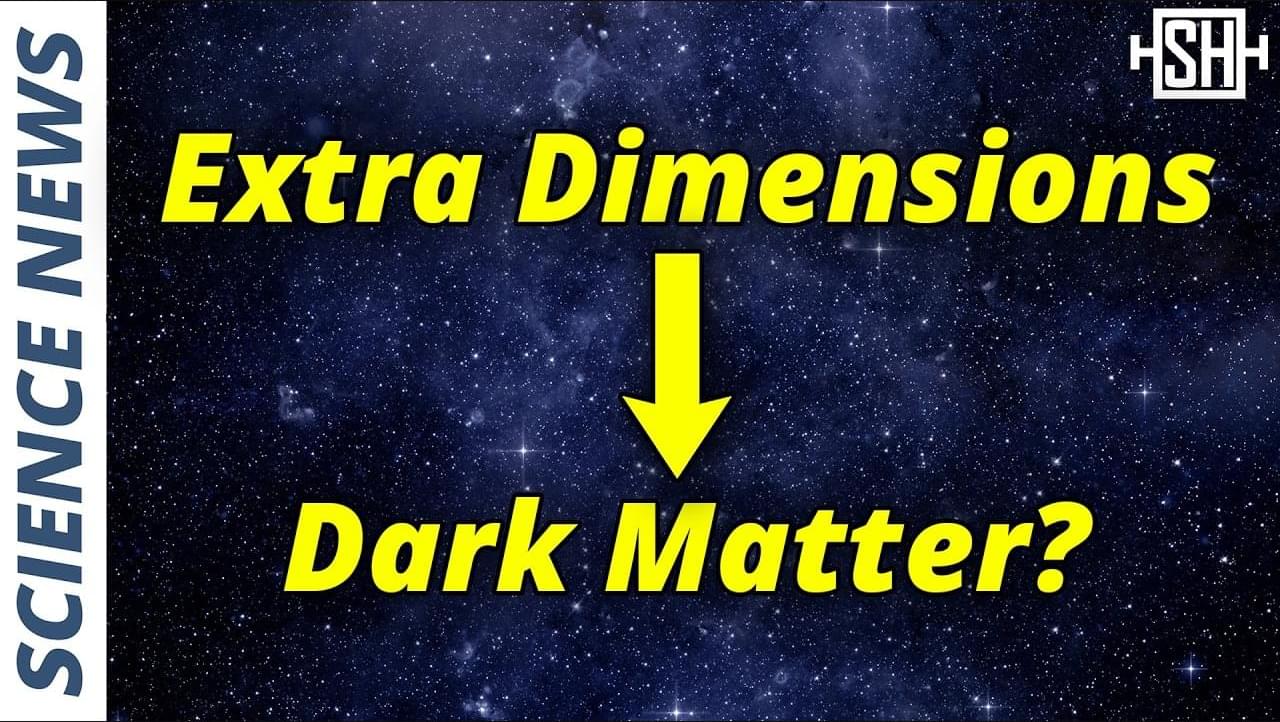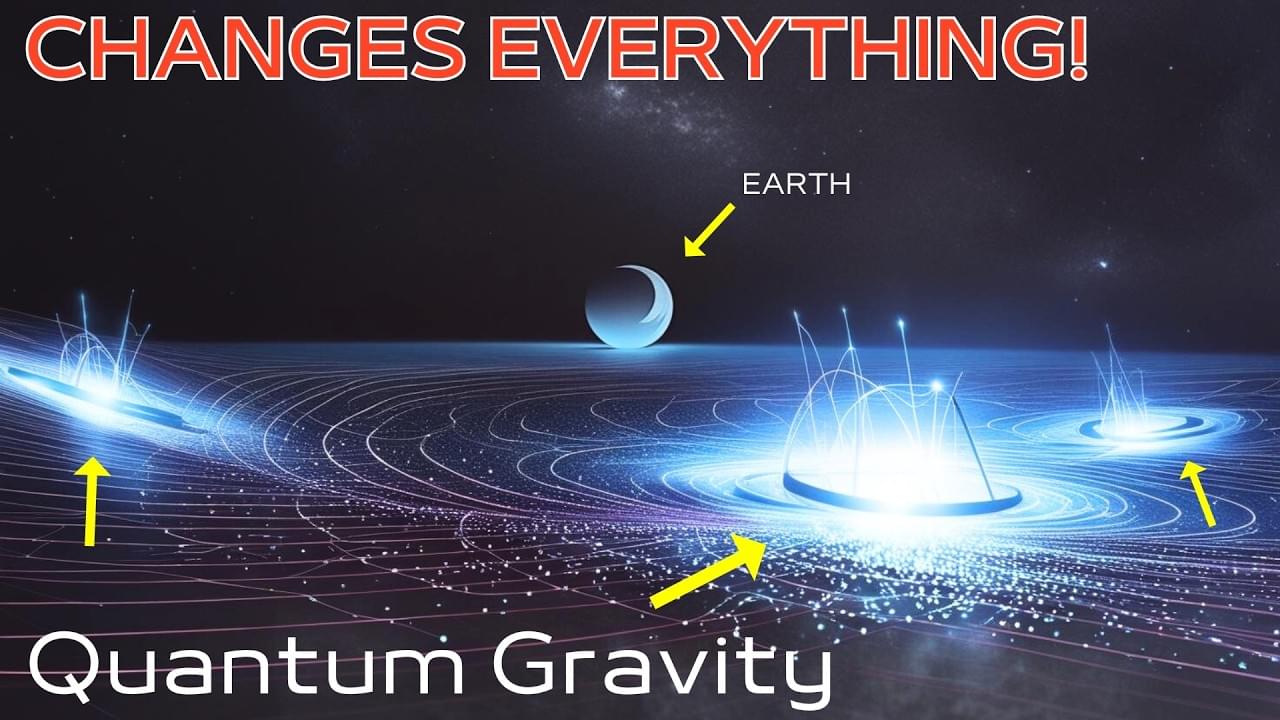A new study suggests our observable universe may be trapped inside a black hole after examining a James Webb Space Telescope survey.
Category: cosmology – Page 15
The fate of the universe hinges on the balance between matter and dark energy: the fundamental ingredient that drives its accelerating expansion. New results from the Dark Energy Spectroscopic Instrument (DESI) collaboration use the largest 3D map of our universe ever made to track dark energy’s influence over the past 11 billion years. Researchers see hints that dark energy, widely thought to be a “cosmological constant,” might be evolving over time in unexpected ways.
DESI is an international experiment with more than 900 researchers from more than 70 institutions around the world and is managed by the U.S. Department of Energy’s Lawrence Berkeley National Laboratory (Berkeley Lab). The collaboration shared their findings today in multiple papers that will be posted on the online repository arXiv and in a presentation at the American Physical Society’s Global Physics Summit in Anaheim, California.
“What we are seeing is deeply intriguing,” said Alexie Leauthaud-Harnett, co-spokesperson for DESI and a professor at UC Santa Cruz. “It is exciting to think that we may be on the cusp of a major discovery about dark energy and the fundamental nature of our universe.”
Using data from nearly 15 million galaxies and quasars, the Dark Energy Spectroscopic Instrument (DESI) has created the most detailed 3D map of the universe ever made. A new analysis combining DESI’s observations with other major cosmic datasets suggests that dark energy, the mysterious force behind
Dark energy, the mysterious force thought to be driving the ever-faster expansion of the universe, appears to be changing over time, according to new observations released Wednesday.
Our current best theories of the universe suggest that dark energy is making it expand faster and faster, but new observations from the Dark Energy Spectroscopic Instrument suggest this mysterious force is actually growing weaker
Findings from the Dark Energy Spectroscopic Instrument (DESI) suggest that dark energy could be evolving over time. If they’re right, cosmology will need a.
The Dark Energy Spectroscopic Instrument (DESI) is mapping millions of celestial objects to better understand dark energy—the mysterious driver of our universe’s accelerating expansion. Today, the DESI collaboration released a new collection of data for anyone in the world to investigate.
The dataset is the largest of its kind, with information on 18.7 million objects: roughly 4 million stars, 13.1 million galaxies, and 1.6 million quasars (extremely bright but distant objects powered by supermassive black holes at their cores).
While the experiment’s main mission is illuminating dark energy, DESI’s Data Release 1 (DR1) could yield discoveries in other areas of astrophysics, such as the evolution of galaxies and black holes, the nature of dark matter, and the structure of the Milky Way.
Compactification of dimensions in string theory and inflationary expansion of space from Planck scale.
Check out these science courses on Brilliant! First 30 days are free and 20% off the annual premium subscription when you use our link ➜ https://brilliant.org/sabine.
Physicists have come up with a new idea for how our universe began, and it could also explain dark matter. They say that if our universe has small extra dimensions, then these can temporarily store energy, causing a “cosmological stasis” in which the universe expands but nothing else happens. Then the stasis ends and dark matter remains. Sounds wild. What are we to make of this?
🤓 Check out my new quiz app ➜ http://quizwithit.com/
💌 Support me on Donorbox ➜ https://donorbox.org/swtg.
📝 Transcripts and written news on Substack ➜ https://sciencewtg.substack.com/
👉 Transcript with links to references on Patreon ➜ / sabine.
📩 Free weekly science newsletter ➜ https://sabinehossenfelder.com/newsle… Audio only podcast ➜ https://open.spotify.com/show/0MkNfXl… 🔗 Join this channel to get access to perks ➜ / @sabinehossenfelder 🖼️ On instagram ➜
/ sciencewtg #science #sciencenews #physics.
👂 Audio only podcast ➜ https://open.spotify.com/show/0MkNfXl…
🔗 Join this channel to get access to perks ➜
/ @sabinehossenfelder.
🖼️ On instagram ➜ / sciencewtg.
#science #sciencenews #physics
Could gravitational waves—the ripples in space-time—also be quantum in nature? Scientists believe they might! A new study suggests gravitational waves could induce quantum entanglement, revolutionizing physics and reshaping our understanding of gravity. But detecting these effects requires cutting-edge technology. Will future observatories like LIGO-India unlock the quantum secrets of space-time? Dive into this fascinating discovery and explore the possibilities of a quantum universe! Watch now and join the discussion!
Paper link: https://www.sciencedirect.com/science… 00:00 Introduction 00:29 The Quantum Nature of Gravitational Waves – A Theoretical Breakthrough 02:21 The Research Behind the Discovery 04:13 Implications and the Future of Quantum Gravitational Wave Research 07:30 Outro 07:43 Enjoy MUSIC TITLE : Starlight Harmonies MUSIC LINK : https://pixabay.com/music/pulses-star… Visit our website for up-to-the-minute updates: www.nasaspacenews.com Follow us Facebook: / nasaspacenews Twitter:
/ spacenewsnasa Join this channel to get access to these perks:
/ @nasaspacenewsagency #NSN #NASA #Astronomy#QuantumPhysics #GravitationalWaves #SpaceTime #QuantumGravity #Einstein #Physics #Astrophysics #Science #BlackHoles #LIGO #QuantumEntanglement #Cosmology #DarkMatter #BigBang #QuantumMechanics #ScienceExplained #FutureOfPhysics #Space #QuantumWorld #Relativity #TimeTravel #HiggsBoson #StringTheory #AstroScience #QuantumTechnology #SpaceExploration #GeneralRelativity #UnifiedTheory #TheoreticalPhysics #QuantumReality #WaveParticleDuality.
Chapters:
00:00 Introduction.
00:29 The Quantum Nature of Gravitational Waves – A Theoretical Breakthrough.
02:21 The Research Behind the Discovery.
04:13 Implications and the Future of Quantum Gravitational Wave Research.
07:30 Outro.
07:43 Enjoy.
MUSIC TITLE : Starlight Harmonies.
MUSIC LINK : https://pixabay.com/music/pulses-star…
Visit our website for up-to-the-minute updates:
www.nasaspacenews.com.
Follow us.
A radical new theory challenges everything we know about the universe’s origins. A quantum twist could explain the cosmos’ most baffling mysteries. Dark matter and dark energy might finally have an answer.

